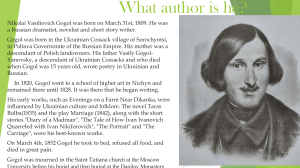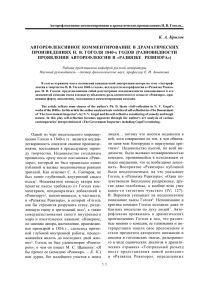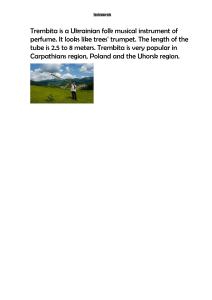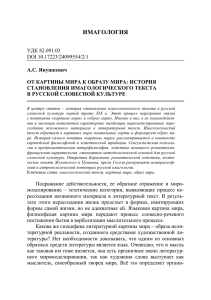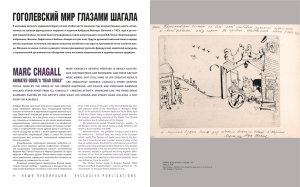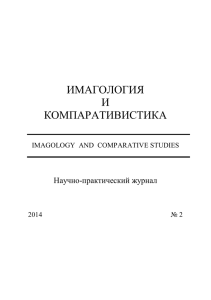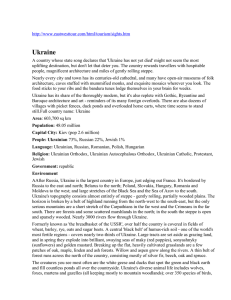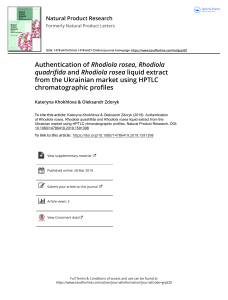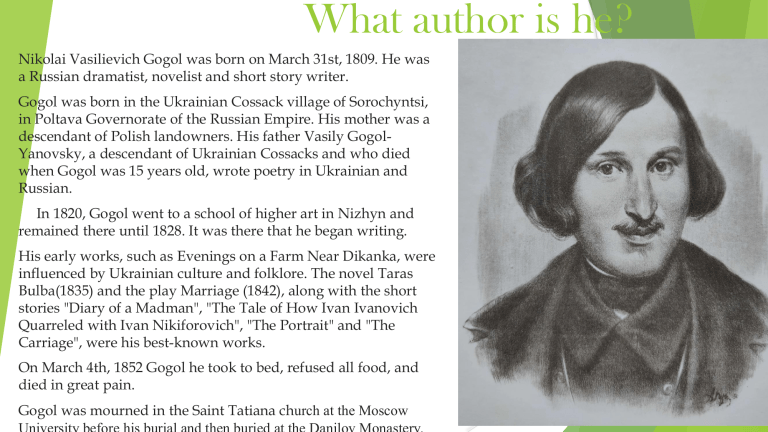
What author is he? Nikolai Vasilievich Gogol was born on March 31st, 1809. He was a Russian dramatist, novelist and short story writer. Gogol was born in the Ukrainian Cossack village of Sorochyntsi, in Poltava Governorate of the Russian Empire. His mother was a descendant of Polish landowners. His father Vasily GogolYanovsky, a descendant of Ukrainian Cossacks and who died when Gogol was 15 years old, wrote poetry in Ukrainian and Russian. In 1820, Gogol went to a school of higher art in Nizhyn and remained there until 1828. It was there that he began writing. His early works, such as Evenings on a Farm Near Dikanka, were influenced by Ukrainian culture and folklore. The novel Taras Bulba(1835) and the play Marriage (1842), along with the short stories "Diary of a Madman", "The Tale of How Ivan Ivanovich Quarreled with Ivan Nikiforovich", "The Portrait" and "The Carriage", were his best-known works. On March 4th, 1852 Gogol he took to bed, refused all food, and died in great pain. Gogol was mourned in the Saint Tatiana church at the Moscow What type of books he written? He has written many books with different genres, but I like his story "Taras Bulba" the most. Taras Bulba is a romanticized historical novel set in the first half of the 17th century and written by Nikolai Gogol. It depicts an elderly Zaporozhye Cossack Taras Bulba and his sons Andriy and Ostap. The sons study at the Kiev Academy and then return home, after which the three men embark on a journey to the Zaporozhye Sich (Zaporozhye Cossack headquarters located in southern Ukraine), where they join other Cossacks and go to war against Poland. The story was originally published in 1835 as part of the short story collection Mirgorod, but in 1842 a greatly expanded version appeared with some differences in the storyline. The 1842 text was described by Victor Ehrlich as "a model of civic virtue and the power of patriotic edification", contrasting the rhetoric of the 1835 version with its "distinctly Unusual facts about autor Imaginary illnesses. Gogol was known for his hypochondriacal tendencies and penchant for imagining himself as sick. He often complained of ailments and paid attention to small physical manifestations, aggravating them in his imagination. This led to the fact that Gogol regularly went to doctors and conducted examinations, despite the fact that he did not have serious health problems. This strange habit was the exclusive characteristic of his complex character and nervous nature. Terrible dreams and nightmares. Dreams played a significant role in Gogol's life. He was known for his penchant for nightmares, which he meticulously recorded and analyzed. He believed that they contained hidden meanings and predicted future events. Recurring nightmares often inspired him to write his works, including "Dead Souls" and "The Overcoat." He believed that dreams are a window into the subconscious and a source of inexhaustible creative energy. Witchcraft and esotericism. Gogol was interested in mystical and occult phenomena. He preferred to communicate with psychics and astrologers, and often visited clairvoyants and charlatans. He also practiced witchcraft and engaged in magical rituals, including reading books on black magic. These hobbies of Gogol may be related to his desire to learn the secrets of the universe and find inspiration for his creative work.
